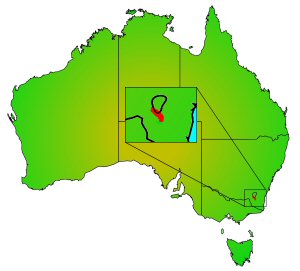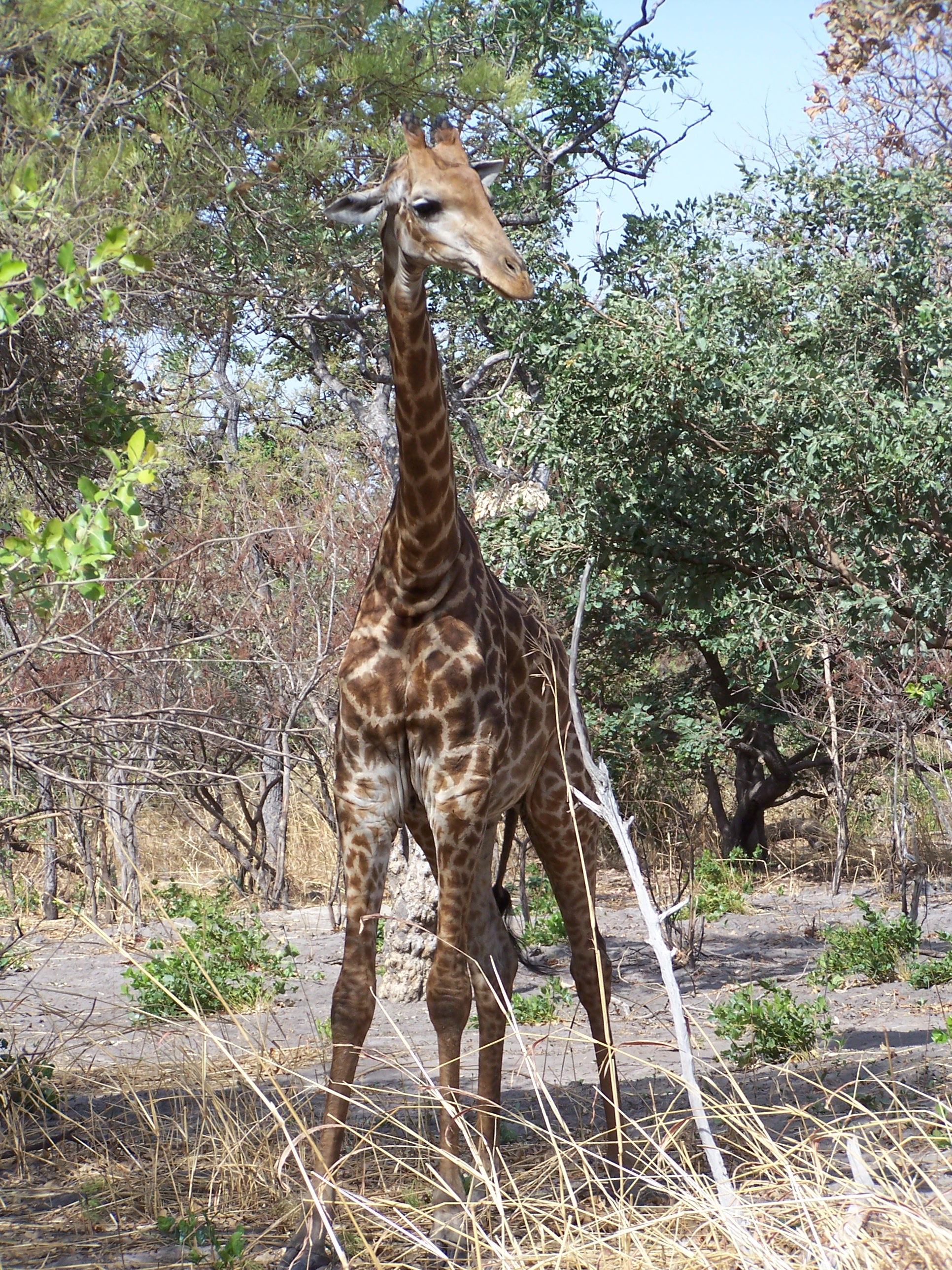|
Galaxias Tantangara
''Galaxias tantangara'', the stocky galaxias, is a galaxiid of the genus ''Galaxias'', a member of the Mountain Galaxias species complex group of freshwater fish, found in Australia. Only discovered in 2014, the fish is classed as critically endangered, mainly because of being preyed upon by introduced species of trout. Description As for other members of the species complex with a long tubular body which is distinctly stocky, particularly between the vent and the pectoral fins. Tail fin generally as long or slightly longer than the caudal peduncle with a square or slightly notched end. Flanges on the caudal peduncle are long, extending almost half way to the anal fin. Centreline fins are somewhat fleshy at the base, paired fins less so. Fins generally rounded and paired fins set low on the body. Medium sized head, wider than deep, top of head between the eyes flat to slightly convex with the eyes well below the upper surface of the head. Mouth has a wide gape with the lo ... [...More Info...] [...Related Items...] OR: [Wikipedia] [Google] [Baidu] |
Australian Society For Fish Biology
The Australian Society for Fish Biology (ASFB) is a professional organisation of ichthyology, fish and fisheries researchers. Founded in 1971, the society describes itself as a "professional, independent, non-profit, non-commercial and non-aligned organisation.""About" , Australian Society for Fish Biology, official website. Accessed 13 November 2016. The Australian Society for Fish Biology holds annual conferences for its members, sometimes in partnership with related organisations such as the Oceania Chondrichthyan SocietyRhiannon Shine (2016 "Sharks smarter than we think, have great awareness of surroundings, ex ... [...More Info...] [...Related Items...] OR: [Wikipedia] [Google] [Baidu] |
Species Profile And Threats Database
The ''Environment Protection and Biodiversity Conservation Act 1999'' (Cth) is an Act of the Parliament of Australia that provides a framework for protection of the Australian environment, including its biodiversity and its natural and culturally significant places. Enacted on 17 July 2000, it established a range of processes to help protect and promote the recovery of threatened species and ecological communities, and preserve significant places from decline. The Act is administered by the Department of Agriculture, Water and the Environment. Lists of threatened species are drawn up under the Act, and these lists, the primary reference to threatened species in Australia, are available online through the Species Profile and Threats Database (SPRAT). As an Act of the Australian Parliament, it relies for its constitutional validity upon the legislative powers of the Parliament granted by the Australian Constitution, and key provisions of the Act are largely based on a number ... [...More Info...] [...Related Items...] OR: [Wikipedia] [Google] [Baidu] |
Species Translocation
Translocation in wildlife conservation is the capture, transport and release or introduction of species, habitats or other ecological material (such as soil) from one location to another. It contrasts with reintroduction, a term which is generally used to denote the introduction into the wild of species from captive stock. The International Union for the Conservation of Nature (IUCN) catalogues translocation projects for threatened species around the globe. Overview Translocation can be an effective management strategy and important topic in conservation biology, but despite their popularity, translocations are a high‐cost endeavor with a history of failures. It may decrease the risk of extinction by increasing the range of a species, augmenting the numbers in a critical population, or establishing new populations. Translocation may also improve the level of biodiversity in the ecosystem. Translocation may be expensive and is often subject to public scrutiny, particularly ... [...More Info...] [...Related Items...] OR: [Wikipedia] [Google] [Baidu] |
Petri Dish
A Petri dish (alternatively known as a Petri plate or cell-culture dish) is a shallow transparent lidded dish that biologists use to hold growth medium in which cells can be cultured,R. C. Dubey (2014): ''A Textbook Of Biotechnology For Class-XI'', 4th edition, p. 469. originally, cells of bacteria, fungi and small mosses. The container is named after its inventor, German bacteriologist Julius Richard Petri. It is the most common type of culture plate. The Petri dish is one of the most common items in biology laboratories and has entered popular culture. The term is sometimes written in lower case, especially in non-technical literature. What was later called Petri dish was originally developed by German physician Robert Koch in his private laboratory in 1881, as a precursor method. Petri, as assistant to Koch, at Berlin University made the final modifications in 1887 as used today. Penicillin, the first antibiotic, was discovered in 1929 when Alexander Fleming noticed tha ... [...More Info...] [...Related Items...] OR: [Wikipedia] [Google] [Baidu] |
Jindabyne
Jindabyne () is a town in south-east New South Wales, Australia that overlooks Lake Jindabyne near the Snowy Mountains, in Snowy Monaro Regional Council. It is a popular holiday destination year round, especially in winter. This is due to its proximity to major ski resort developments within the Kosciuszko National Park, including Thredbo, Perisher and Charlotte Pass. Originally situated on land that is now under Lake Jindabyne, the township was transferred to its present location in the 1960s due to the construction of Jindabyne Dam, on the Snowy River, as part of the Snowy Mountains Scheme. At the , Jindabyne had a population of 2,629 people. The town's name is derived from an aboriginal word meaning "valley". Jindabyne is one of the highest settlements of its size in Australia, at 918 metres above sea level. Snowfalls regularly occur during winter. In mid-July in 2004 and 2005, snow fell up to half a metre following freak snowfalls over a large area of New South Wales. ... [...More Info...] [...Related Items...] OR: [Wikipedia] [Google] [Baidu] |
Gaden , a Tibetan monastery, sometimes referred to as Gaden
{{surname ...
Gaden is a surname. Notable people with the surname include: *Alexander Gaden (born 1880), Canadian silent film actor *Elmer L. Gaden, American biochemist and pioneer of biochemical engineering *John Gaden (born 1941), Australian actor and director See also *Ganden Monastery Ganden Monastery (also Gaden or Gandain) or Ganden Namgyeling or Monastery of Gahlden is one of the "great three" Gelug university monasteries of Tibet. It is in Dagzê County, Lhasa. The other two are Sera Monastery and Drepung Monastery. Ga ... [...More Info...] [...Related Items...] OR: [Wikipedia] [Google] [Baidu] |
Department Of Primary Industries (New South Wales)
The New South Wales Department of Primary Industries (DPI) is an agency of the New South Wales Government, responsible for the administration and development for agriculture, fisheries, aquaculture, forestry, and biosecurity in New South Wales. The DPI works to drive innovation in primary industries to improve resilience, productivity and sustainability, and to ensure risks are managed for natural resources, farming and food. Despite the name, the DPI is no longer and is not a department of the New South Wales government. The DPI is part of the Department of Regional NSW, and was previously part of the Department of Planning, Industry and Environment until April 2020. The DPI headquarters is located in Orange. Structure Leadership The DPI is led by its director-general, currently Scott Hansen, who reports to the Minister for Agriculture and Western New South Wales, presently the Honourable Adam Marshall . The DPI sits within the wider portfolio of the Department of Regiona ... [...More Info...] [...Related Items...] OR: [Wikipedia] [Google] [Baidu] |
Captive Breeding
Captive breeding, also known as captive propagation, is the process of plants or animals in controlled environments, such as wildlife reserves, zoos, botanic gardens, and other conservation facilities. It is sometimes employed to help species that are being threatened by the effects of human activities such as climate change, habitat loss, fragmentation, over hunting or fishing, pollution, predation, disease, and parasitism. For many species, relatively little is known about the conditions needed for successful breeding. Information about a species' reproductive biology may be critical to the success of a captive breeding program. In some cases a captive breeding program can save a species from extinction, but for success, breeders must consider many factors—including genetic, ecological, behavioral, and ethical issues. Most successful attempts involve the cooperation and coordination of many institutions. History Captive breeding techniques began with the first human ... [...More Info...] [...Related Items...] OR: [Wikipedia] [Google] [Baidu] |
Albury
Albury () is a major regional city in New South Wales, Australia. It is located on the Hume Highway and the northern side of the Murray River. Albury is the seat of local government for the council area which also bears the city's name – the City of Albury. It is on the Victoria-New South Wales border. Albury has an urban population of 49,172 and is separated from its twin city in Victoria, Wodonga, by the Murray River. Together, the two cities form an urban area with a population of 93,603 at June 2018. Estimated resident population, 30 June 2018. It is from the state capital Sydney and from the Victorian capital Melbourne. Said to be named after a village in England, Albury developed as a major transport link between New South Wales and Victoria and was proclaimed a city in 1946. History The Wiradjuri people were the first known humans to occupy the area, (Wiradjuri northern dialect pronunciation iraːjd̪uːraj or Wirraayjuurray people (Wiradjuri southern dialect pr ... [...More Info...] [...Related Items...] OR: [Wikipedia] [Google] [Baidu] |
Charles Sturt University
Charles Sturt University is an Australian multi-campus public university located in New South Wales, Australian Capital Territory and Victoria. Established in 1989, it was named in honour of Captain Charles Napier Sturt, a British explorer who made expeditions into regional New South Wales and South Australia. Charles Sturt offers undergraduate, postgraduate, higher degrees by research and single subject study. It also has course delivery partnerships with several TAFE institutions across Australia, including with the New South Wales Police Force. History The history of Charles Sturt University dates to 1895, with the establishment of the Bathurst Experiment Farm. The university was established on 1 July 1989 from the merger of several existing separately-administered Colleges of Advanced Education with the enactment of The ''Charles Sturt University Act 1989'' (Act No. 76, 1989). The constituent colleges included the Mitchell College of Advanced Education in Bathu ... [...More Info...] [...Related Items...] OR: [Wikipedia] [Google] [Baidu] |
Thurgoona
Thurgoona is an outer suburb of the regional city of Albury in southern New South Wales, Australia. The suburb is located in the City of Albury local government area. History Thurgoona Post Office opened on 1 January 1874, closing in 1961. The first land release in Thurgoona was St Johns Hill in 1978, followed by St Jones Green in 1980, Corrys Wood in 1981, St Hilaire in 1985 and Thurgoona Park in 1986. The 1980s were a time of massive growth and development in Thurgoona. Thurgoona Drive and Elizabeth Mitchell Drive were completed by 1982, connecting Thurgoona to Albury via the Hume and Riverina Highways. Soon after the Thurgoona Golf Club opened its first 9 holes in 1983, followed by a further 9 holes in 1985. In 1986 the Albury-Wodonga Corporation moved its headquarters to Thurgoona. By 1989, a hotel had opened at the golf course, a new shopping centre was under construction, Thurgoona Public School opened and the Thurgoona Industrial Park opened near the Albury Airport. ... [...More Info...] [...Related Items...] OR: [Wikipedia] [Google] [Baidu] |





